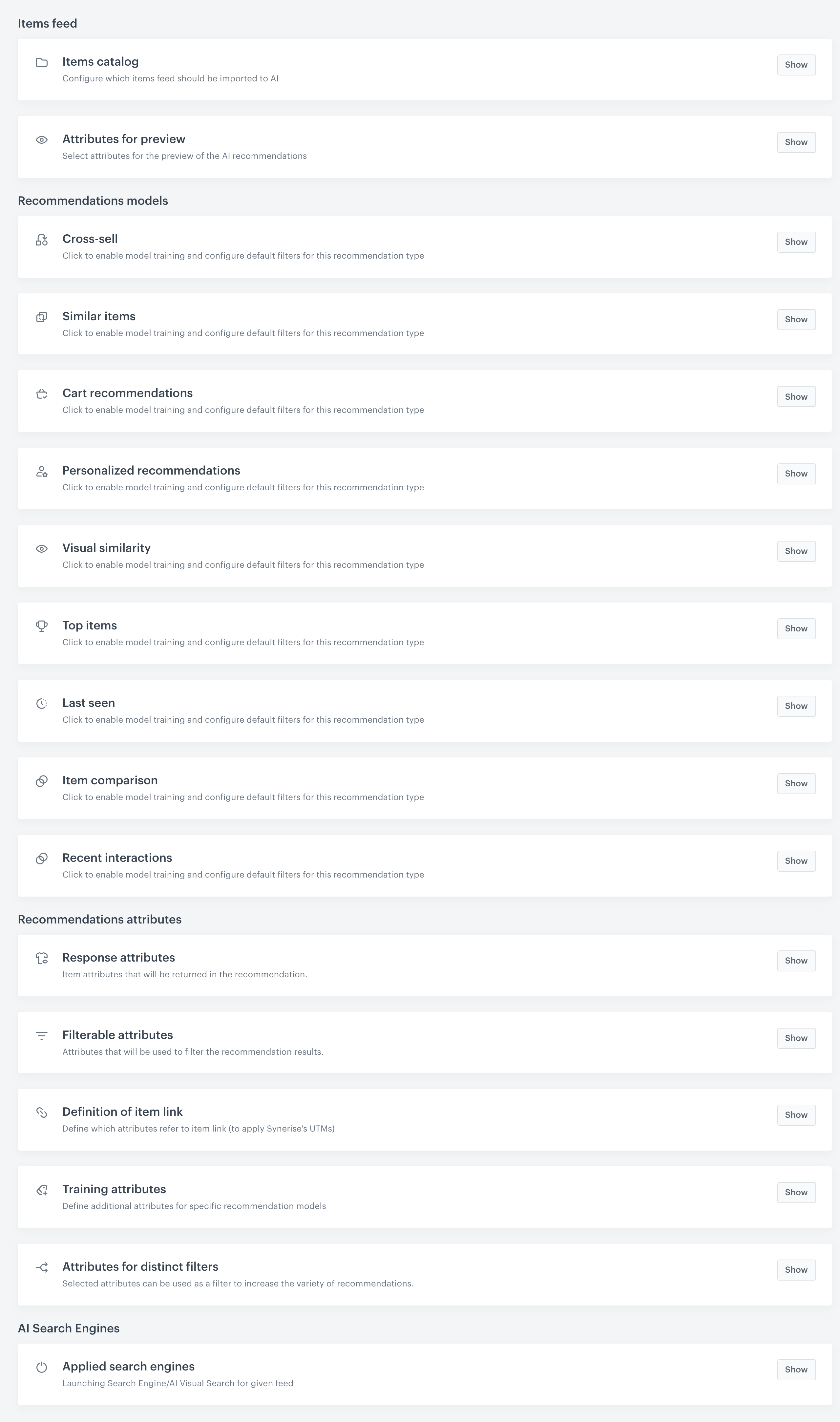Configure AI Engine for Propensity
The Propensity model allows you to create predictions that predict the likelihood of a purchase of specific items for a defined group of customers. To use the Propensity model, you must prepare an item catalog which will be the source of items and enable AI engine for this item catalog.
During the configuration of the AI engine for the Propensity model, you must go through the following steps:
Adding item feed
The first step is selecting the feed from which recommendations will source the items. You can either select a catalog that contains a feed or use Google Merchant Feed.
- Go to Settings > AI engine configuration.
- Click Add feed.
Result: A pop-up appears. - Select the product feed you want to use.
Product feed uploaded to a catalog
- On the pop-up, select the type of catalog:
- Data catalog
- Metadata catalog
- From the dropdown list, select a catalog.
- Confirm by clicking Apply.
Result: The selected catalog appears on the list in Settings > AI Engine configuration.
Google MerchantTip: Include the Last-Modified header to enable detection of whether the product feed import is necessary, this will help you reduce data transmission costs.- Provide the following information:
- the link to the Google Merchant feed,
- the name of the field,
- the type of the feed,
- the frequency of pulling updates from the feed to Synerise,
- authorization type,
- user name,
- and password.
- Confirm by clicking Apply.
Result: The feed appears on the list in Settings > AI Engine configuration.
- On the pop-up, select the type of catalog:
Selecting item feed
-
In Settings > AI Engine Configuration, on the list of feeds, click the feed you added according to the Select product feed procedure.
The configuration form opens. In the Item catalog section, the feed you are configuring is selected automatically and you can proceed to the next part of the configuration.
Blank model configuration form
Selecting filters
You can define the attributes which you can use later to filter recommendations results as well as allow you to filter items in the settings of the Propensity predictions. The attributes also become available in the Analytics module.
- On the Filterable attributes tab, click Show.
- Click Select attributes.
- Tick the checkboxes next to the attributes which you want to use for filtering the recommendation results.
Recommended: Don’t usetitleordescriptionas filterable attributes. Using these attributes as filterable has a negative impact on performance. - Confirm by clicking Apply.
Every day, attributes added to Filterable attributes are automatically deleted if they fulfill all of the following conditions:
- They were added to filterable attributes more than 10 days ago.
- They are not used in a search or suggestion index configuration.
- They are not set as filters or boosting rules in a recommendation campaign.
- They are not set as a default filter in a recommendation configuration.
- They are not used as additional filters in a recommendation API/SDK request.
Enabling Propensity predictions
Enable the usage of items from the product feed for preparing the Propensity predictions.
- In the Propensity tab, click Show.
- Set the toggle to Enabled.